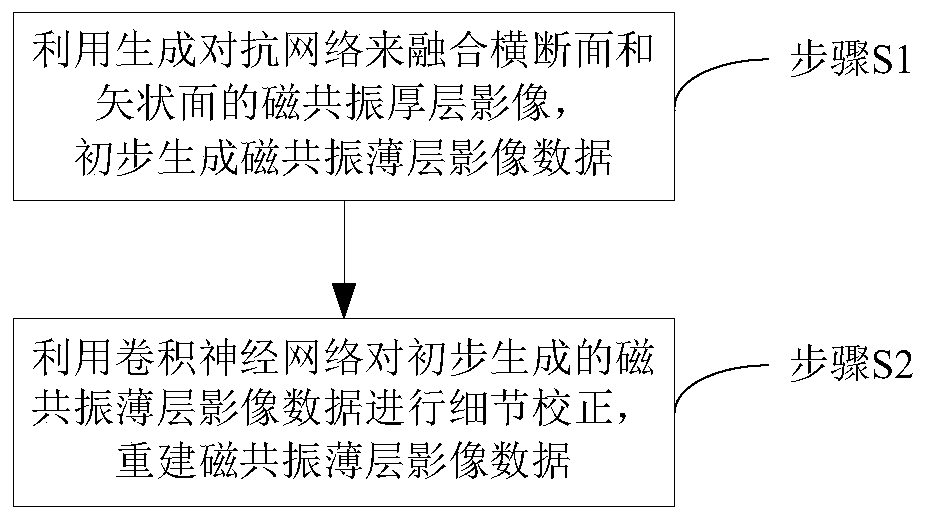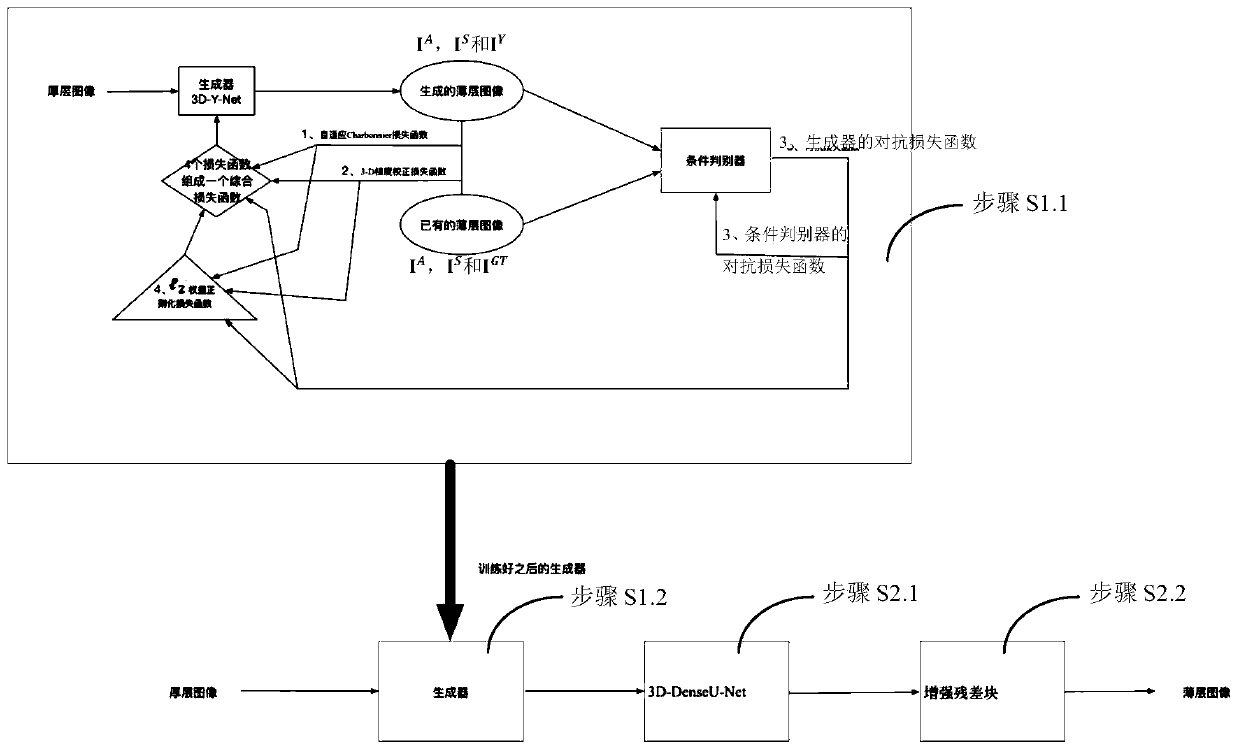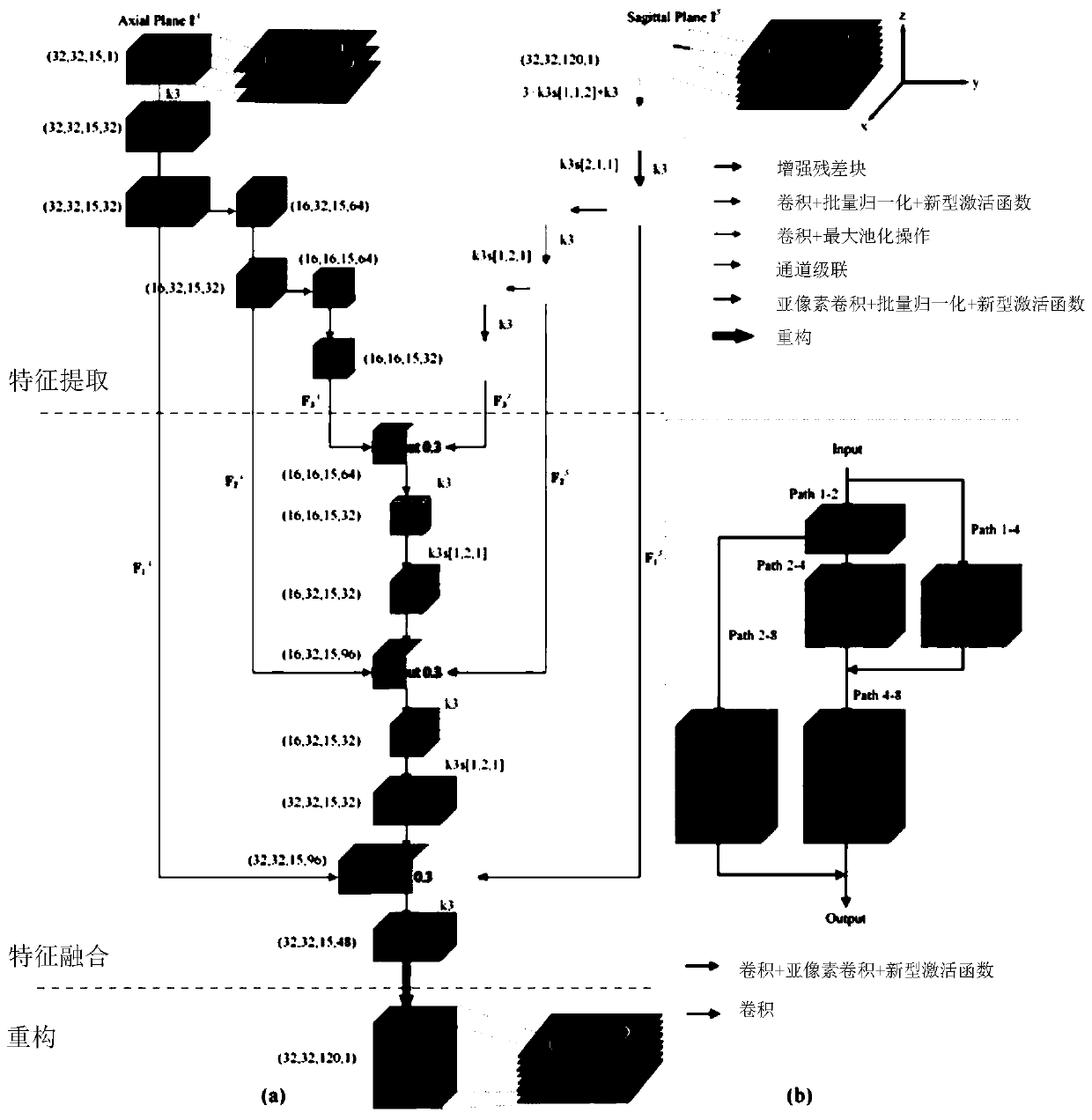Magnetic resonance thin-layer image reconstruction method
An image reconstruction and magnetic resonance technology, applied in image data processing, 3D modeling, instruments, etc., can solve the problems of difficult data acquisition, insufficient structural similarity performance, and inability to achieve clinical diagnosis, and achieve the effect of increasing data capacity.
- Summary
- Abstract
- Description
- Claims
- Application Information
AI Technical Summary
Problems solved by technology
Method used
Image
Examples
Embodiment Construction
[0045] based on the following Figure 1 to Figure 6 , specifically explain the preferred embodiment of the present invention.
[0046] Such as figure 1 As shown, the present invention provides a magnetic resonance thin layer image reconstruction method, comprising the following steps:
[0047] Step S1, using the generative adversarial network to fuse the magnetic resonance thick-slice images of the transverse plane and the sagittal plane, and initially generate the corresponding magnetic resonance thin-slice image data;
[0048] Step S2, using the convolutional neural network to correct the details of the preliminarily generated magnetic resonance thin-slice image data, and reconstruct the magnetic resonance thin-slice image data.
[0049] The generated confrontation network (3D-Y-Net-GAN) includes a generator and a conditional discriminator. The convolutional neural network includes a three-dimensional densely connected U-shaped structure (3D-DenseU-Net) and an enhanced re...
PUM
 Login to View More
Login to View More Abstract
Description
Claims
Application Information
 Login to View More
Login to View More - R&D
- Intellectual Property
- Life Sciences
- Materials
- Tech Scout
- Unparalleled Data Quality
- Higher Quality Content
- 60% Fewer Hallucinations
Browse by: Latest US Patents, China's latest patents, Technical Efficacy Thesaurus, Application Domain, Technology Topic, Popular Technical Reports.
© 2025 PatSnap. All rights reserved.Legal|Privacy policy|Modern Slavery Act Transparency Statement|Sitemap|About US| Contact US: help@patsnap.com



